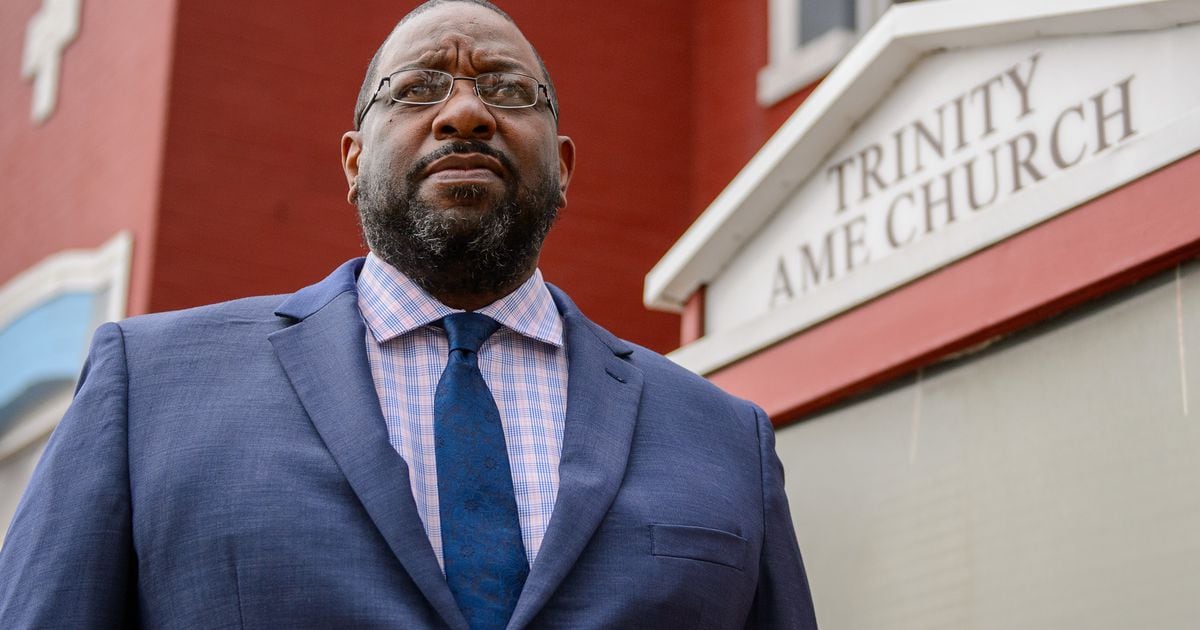Historic SLC church helping to preserve history of Black Utahns, other people of color — before it disappears

10/05/2024 14:00
Most Americans, if they know anything about the 1898 Battle of San Juan Hill, likely associate the key victory in the Spanish-American War with Teddy Roosevelt and his Rough Riders.
Yet, that's only part of the story.
Among those to engage in some of the battle's heaviest fighting were the all-Black "Buffalo Soldiers" from Utah's Fort Douglas — a contribution that has largely been forgotten, said Robert Burch, executive director of Sema Hadithi African American Heritage and Culture Foundation.
Burch and his colleagues at Sema Hadithi, the Utah Historical Society and the Utah Black Chamber are on a mission to change this, preserving stories and artifacts of Utahns of color with the goal of ultimately presenting them in the forthcoming Museum of Utah, set to open in 2026.
First, though, they have to find them.
To this end, Salt Lake City's historic Trinity African Methodist Episcopal Church, 239 Martin Luther King Jr. Blvd. (600 South), will host a Black history collection event Saturday, May 11, from 12:30 to 4 p.m. Open to all, the gathering represents a rare opportunity for members of the public to contribute to the official record by bringing pieces of history regarding Utahns of color that Burch and his colleagues will scan and otherwise record.
Critically, individuals will not be expected to part with any items they might want logged, a decision meant to ensure that artifacts remain in the possession of the communities they represent.
"It's a pretty unique agreement," Burch said, explaining that museums frequently take ownership of properties, leaving the original owners with little recourse should they seek to reclaim them.
Saturday's outreach represents the second such collection event, with the next one scheduled for June in Utah County, followed by January in Moab and March in St. George.
"It's not limited to anybody," said Burch, a member of the Utah State Board of History. "If people have history of Chinese people, if they have history of Latino people that they would like to share, they are certainly welcome to come."
Burch also encouraged parents of adopted Black children to participate, as well as white Utahns with Black relatives going back in their family tree.
Other partners in this collection effort include Hill Air Force Base, which Burch praised as having done an "extraordinary job" maintaining a history on its servicemen and women of color, as well as The Church of Jesus Christ of Latter-day Saints, which has provided details on church members who came to the then-territory as enslaved individuals.
function onSignUp() { const token = grecaptcha.getResponse(); if (!token) { alert("Please verify the reCAPTCHA!"); } else { axios .post( "https://8c0ug47jei.execute-api.us-east-1.amazonaws.com/dev/newsletter/checkCaptcha", { token, env: "PROD", } ) .then(({ data: { message } }) => { console.log(message); if (message === "Human 👨 👩") { document.getElementById("submit-btn").removeAttribute("disabled"); } else { console.log("ROBOTO"); } }); } }

